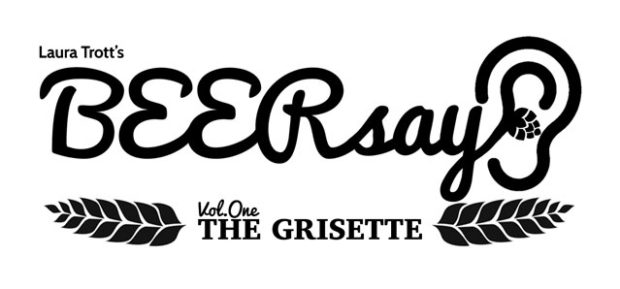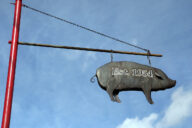Article by Laura Trott
Before we get started here I need to make something absolutely evident; I am a huge beer nerd. I’m more than your typical “I know the difference between a lager and an ale” kind of beer nerd. I never feel like I know enough. Therefore, I spend far more time than I should reading and researching. I am an avid homebrewer who very carefully assembles recipes and then rebrews them with minuscule changes until I am happy with them. Whenever I find some beer style interesting, I research it and the history behind it. If I get really into something, I go on epic internet-sleuthing-escapades in which I will find at least three different reliable sources I can cross reference with each other. Then I get information from the books I inevitably purchase. I will then prattle on at length about these beers to whoever will listen. This time, I am going to talk your ear off about the grisette, a style I encountered a while back and am currently obsessed with.
Maybe you have also seen this style of beer written up on the menu board of your favorite tasting room, or perhaps have come across it while visiting your local bottle shop. It sounds French and tastes pretty refreshing too if you’ve tried it, which, I recommend if you haven’t yet. Originally hailing from the Hainaut region in French-speaking Belgium, this beer style is lower in the ABV department making it lighter, or “sessionable.” (I’ll have to tell you where that little term came from at some later time. I swear it’s interesting in its own right).
The grisette style fits in nicely in the farmhouse category of beer. You may have in fact already encountered it’s farmhand sibling, the saison. Like the saison, it was brewed to quench the thirst of hard-working people. Where the saison was brewed for seasonal farmhands, the grisette was likely created for miners. Unlike the saison, the grisette is often lower on funk and floral notes and typically is a touch “hoppier.” For my homebrewin’ pals out there, supposedly, this style was brewed with more malted wheat than a saison to add body to what otherwise could’ve been a watery ale. I’ve also read (during my late night and most likely beer-fueled internet adventures) that the grain bill, or recipe for the grisette, can be more proteinaceous. It involves using far more 6-row grain than 2-row grain plus, maybe flaked wheat. This style would have put more focus on higher quality hops, although I am unsure why.
———————————————————————————————————–

Wasserhund Brewery Company presents the 2nd Annual Oktoberfest Event for all of Coastal Virginia and beyond on September 16th from noon till 6pm at Hunt Club Farms. This event will serve as the quintessential Oktoberfest for our area featuring over 20 breweries, traditional German food and fair, festival rides, and so much more. For more info click the flier above or visit squadup.com/events/wasserhund-oktoberfest-2017
———————————————————————————————————–
Here’s the thing about these older styles of beer, frequently there just isn’t a lot of documentation. Much of what can be found often conflicts, which leads to speculation. Of the recipe research I’ve seen, there was a decent amount of variance in what was used. This remains the same for many of the grisettes currently being produced in modern American brewing. This variance also extends into the reason behind the name; grisette roughly translates to “little grey”, which leaves a good deal of speculation about what the heck the grey thing is that the name is referring to. It could be related to the miners covered in coal dust, the stone quarries, the dresses worn by women who may have been factory workers who perhaps served beer to the miners, or maybe the color of the beer itself. Personally, I think the idea that the beer is named after its color is a farce, as the grisette can range from a golden amber to a greyish-toned blonde. Supposedly, the grey tinge may have come from an extended boil, but I am not inclined to believe that. Phil Markowski, author of Farmhouse Ales, tells us that the grisette was a lighter, golden ale that wasn’t particularly distinct in any way and slightly similar to a saison. My own brewing experiments back this up as far as the color goes, as longer boils have, if anything, put me at risk of scorching and therefore creating darker caramel colors. Personally, I am partial to the idea that the beer is named after the grey stones in the region because I just think that sounds neat.
You can make your own assumptions and conclusions about the grisette, and I encourage homebrewers out there to give this style a try too. If you find me palling around at a local tasting room, I will be more than happy to talk non-stop about whatever random beer fact that’s captivated me for the week. Also, if you want to get your dirty paws on a grisette, our very own Benchtop Brewery in Norfolk makes a light and refreshing version. You can also find a bottle of Urban Family Brewing’s Signs of Erosion at your local bottle shop. I’m sure as time goes on we will be seeing this style more and more and I am looking forward to it.







No Comments